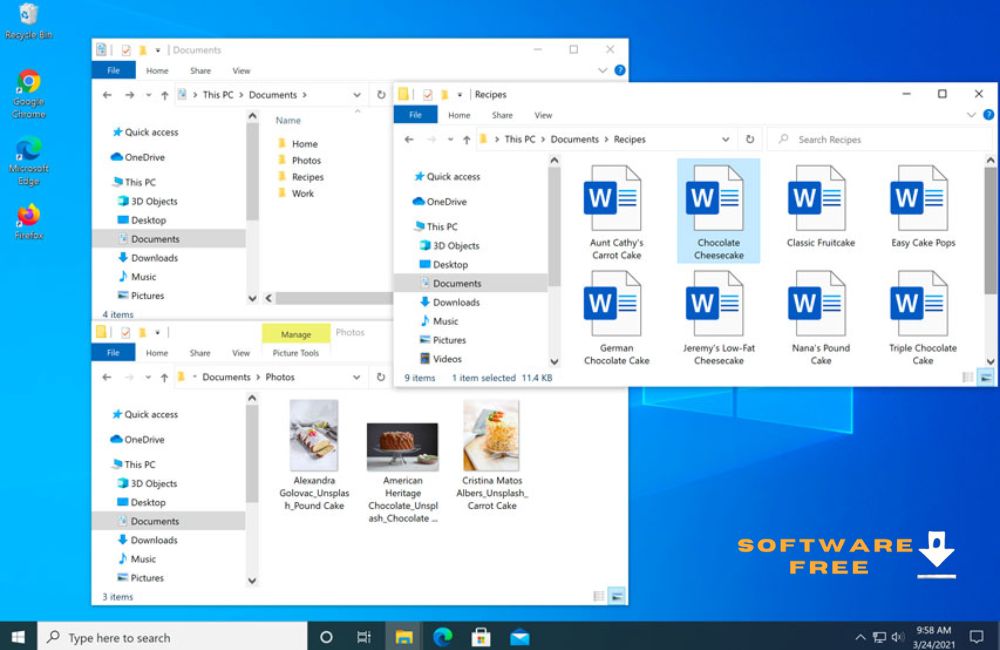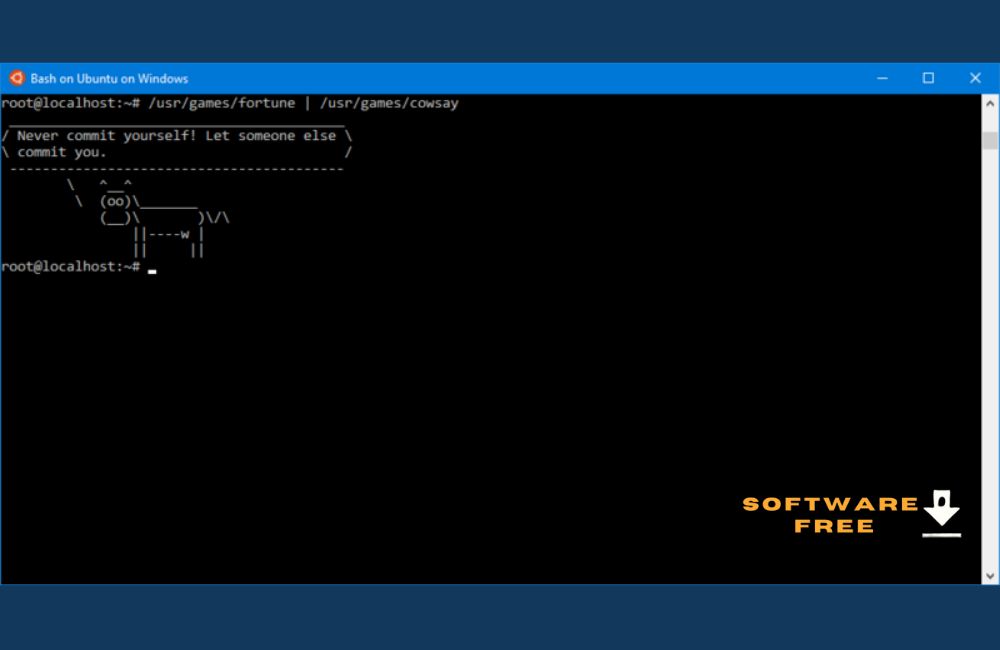Windows 10 Home, a significant update to Microsoft’s Windows NT operating system . Windows 8.1, which was introduced almost two years ago, is directly replaced by this version. On July 15, 2015, it was put into production; on July 29, 2015, it was made available for purchase. The retail versions of Windows 8 and 8.1 customers could upgrade to Windows 10 for free via the Windows Store, while Windows 7 users could obtain it via Windows Update. Windows 10 was made available for download via MSDN and TechNet. In addition to extra test builds of Windows 10, which are only available to Windows Insiders, Windows 10 is continuously updated with new builds that are made available to everyone for free. Enterprise devices may adopt long-term support milestones, which only receive significant upgrades—like security patches—during their ten-year extended support lifecycle, or they may receive these updates more slowly. Microsoft declared in June 2021 that as of October 14, 2025, support for Windows 10 editions not included in the Long-Term Servicing Channel (LTSC) will terminate. Download also Windows 10 Activator Latest Version to activate your Windos 10.

When Windows 10 was first released, reviews were largely positive. Although Windows 10’s touch-oriented user interface mode was criticized for having regressions upon the touch-oriented interface of its predecessor, critics applauded Microsoft for providing the desktop-oriented interface consistent with earlier versions of Windows, in contrast to the tablet-oriented approach of Windows 8. Additionally, critics lauded Xbox Live integration, the enhancements made to Windows 10’s bundled software over Windows 8.1, the usefulness and capabilities of Cortana, the personal assistant, and Microsoft Edge’s replacement of Internet Explorer. The required update installation, privacy concerns about data collecting by the OS for Microsoft and its partners, and adware-like methods used to market the operating system upon introduction are just a few of the modifications to operating system behaviors that have drawn criticism from media sources.
Windows 10 Home Features
Windows 10 fixes numerous issues with the Windows 8 user interface and improves consistency between device classes in terms of both functionality and user experience. Some apps and user interface components of Windows 10 Mobile, the replacement for Windows Phone 8.1, were shared with its PC version.
The Metro-style first introduced in Windows 8 is expanded with support for universal apps in Windows 10. With essentially identical code, universal apps can be created to function on a variety of Microsoft product families, like as PCs, tablets, smartphones, embedded systems, Xbox One, Surface Hub, and mixed reality. The Windows user interface was updated to manage the switching between a touchscreen-optimized interface and a mouse-oriented interface depending on the input devices that are available, especially on 2-in-1 PCs. Both interfaces have a revised Start menu that combines Windows 8 tiles with old Windows 7 Start menu features. The Microsoft Edge web browser, a virtual desktop system, Task View, a window and desktop management tool, support for fingerprint and facial recognition login, improved security features for business settings, and DirectX 12 were also included in Windows 10.
User interface and desktop
On the Windows 10 desktop, a redesigned version of the Start menu is used, with tiles signifying apps on the right and a list of locations and other options on the left. In Tablet mode, the menu has the ability to be enlarged and expanded into a full-screen display by default. Task View, which shows all open windows and lets users navigate between them or between several workspaces, introduced a new virtual desktop technology. Previously limited to full screen mode, universal apps can now run in self-contained windows much like regular programs. You can now move program windows to the corners of the screen to snap them to certain quadrants. Task View displays when a window is snapped to one side of the screen, prompting the user to select a second window (referred to as “Snap Assist”) to occupy the vacant space.Moreover, new Windows system icons were created.

Windows 10 is made to adjust its user interface according on the available input methods and the kind of device being used. The device provides two distinct modes of operation: one tailored for usage with a mouse and keyboard, and another known as “Tablet mode” that is intended for touchscreen devices. The two modes can be switched between at any moment by the user, and Windows has the ability to prompt or transition between them automatically in response to specific events. For example, when a 2-in-1 PC is switched to laptop mode or when a tablet loses Tablet mode when a keyboard or mouse is plugged in.
System security
Multi-factor authentication is built into Windows 10 using standards created by the FIDO Alliance. With the Windows Hello platform, the operating system now offers enhanced support for biometric authentication. Similar to Kinect, devices with compatible cameras that require infrared illumination—like Intel RealSense—allow users to log in using their iris or facial recognition. Users who own devices that support readers can log in using their fingerprints. In February 2018, support for palm vein scanning was also included thanks to a collaboration with Fujitsu. Asymmetric encryption is used to safeguard credentials, which are stored locally.

Command line
Now, you can use standard keyboard shortcuts like cut, copy, and paste on console windows based on Windows Console (for any console app, not just PowerShell and Windows Command Prompt), resize them to any size you want, and make them fill the entire screen by pressing Alt+↵ Enter. Transparency and word wrap are two more elements that were added. If necessary, these features can be turned off to return to the old console.

Storage requirements
Windows 10 automatically compresses system files to lessen the operating system’s storage footprint. For 32-bit computers, the solution can shrink Windows’ storage footprint by about 1.5 GB, while for 64-bit systems, it can shrink it by about 2.6 GB. The amount of compression that is utilized depends on a performance evaluation that OEMs or installers carry out during installations to see how much compression can be applied without degrading operating system performance. Moreover, the Runtime System Files feature of the Refresh and Reset operations eliminates the need for a separate recovery partition, permits patches and updates to be installed after the operation, and further minimizes the space needed for Windows 10 by up to 12 GB.

These features take the role of the WIMBoot mode, which was included in the Windows 8.1 Update and gave OEMs the ability to set up flash-based, low-capacity devices to use Windows system files instead of the compressed WIM image that was normally used for installation and recovery. A better source is required Additionally, Windows 10 has a feature in its Settings app that lets users get a breakdown of how various file kinds use the storage space on their device and choose which file types are saved to internal storage or an SD card by default.
Multimedia and gaming
Windows 10 offers improved Xbox ecosystem connectivity. The Xbox Console Companion, formerly known as the Xbox app, has replaced the Xbox SmartGlass. It enables users to explore their game library, which includes both PC and Xbox console games. Additionally, Game DVR can be accessed via a keyboard shortcut, allowing users to record and share the most recent 30 seconds of gameplay to other platforms like Xbox Live or OneDrive. Windows 10 allows users to play and control games on an Xbox One console via a local network. The Xbox Live SDK allows developers to integrate Xbox Live functionality into apps. Future wireless Xbox One accessories such as controllers are also supported by Windows using an adapter.

Windows 10 Home vs. Windows 10 Pro: A Feature-Based Comparison
The main difference between Windows 10 Home and Pro is the range of features they offer. Here is a comparison table highlighting the key differences:
| FEATURE | WINDOWS 10 HOME | WINDOWS 10 PRO |
|---|---|---|
| Remote Desktop | No | Yes |
| BitLocker Drive Encryption | No | Yes |
| Group policy management | Limited | Extensive |
| Hyper-V Virtual Machine Creation | No | Yes |
| Active Directory Domain Join | No | Yes |
| Windows Server Backup | No | Yes |
drive_spreadsheetExport to Sheets
Windows 10 Home vs. Windows 10 Education vs. Windows 10 Enterprise: A Target Audience Comparison
Windows 10 Home, Pro, Education and Enterprise are aimed at specific user groups with tailored functions and options:
| VERSION | TARGET AUDIENCE | FEATURES |
|---|---|---|
| Windows 10 Home | Home users | Streamlined interface, multitasking tools, security features, Universal App Platform |
| Windows 10 Pro | Businesses and power users | Remote desktop, BitLocker drive encryption, group policy management, Hyper-V virtual machines, Active Directory domain join, Windows Server Backup |
| Windows 10 Education | Educational institutions | All features of Pro, plus additional tools for teaching and learning |
| Windows 10 Enterprise | Enterprise environments | All features of Pro and Education, plus advanced security features, device encryption, and enterprise-grade management tools |
Windows 10 Home: A Suitable Choice for Casual Computing
Windows 10 Home is a great choice for home users who want an operating system that’s easy to use for their everyday tasks. Windows 10 Home’s intuitive interface, multitasking abilities, and security options make it an excellent choice for web surfing, email management, and basic productivity.
Windows 10 Pro: A Comprehensive Choice for Business and Advanced Users
Windows 10 Pro offers a number of features that are useful to users. These include remote management, virtualization, and secure data storage. Remote desktop, BitLocker encryption and Group Policy management tools are targeted at power users and businesses.
Windows 10 Education: A Tailored Choice for Educational Institutions
Windows 10 Education was designed for educational environments. It offers advanced tools to enhance teaching and learning, in addition the extensive features of Windows 10 Pro. These features are designed to improve collaboration, device management and resource sharing in schools and universities.
Windows 10 Enterprise: A Robust Choice for Enterprise Environments
Windows 10 Enterprise’s advanced security features, device encryption, and enterprise management tools make it suitable for enterprise environments. It provides comprehensive protection from cyberattacks, and allows for central management of user accounts and devices.
Windows 10 Home License key+Premium Unlocked
Windows 10 Home Product Key Free
- 62BFY-NBV73-4WHY4-QD2V3-T6PHH
- PVVP6-FNV3K-VQGT7-WDFXF-CR397
- BCNV7-34P3F-QF4F2-HKV2X-7XMK7
- Y74NV-8BQM6-GYDD3-FGDQB-92D97
Free Windows 10 Home N product key
- 33R9N-3QJCF-69C84-VYTGM-F9CHW
Windows 10 Home activation key free
- M33NG-32G8B-KTTRJ-P2FHR-KBT3V
- 87KDK-NW2JH-XFYFG-CTPWP-YKMK7
- 6222P-NV83Q-FW8JG-QHTTJ-2GYK7
Windows 10 Home license key free
- 7P6MY-6NVKJ-B32HK-M4KCR-YTDDV
- WX4C6-N3PMR-7DDHT-24QG3-KKXQV
Windows 10 Home Key Features
- Start Menu: A familiar and customizable Start menu that combines the best of Windows 7 and Windows 8.
- Cortana: Microsoft’s virtual assistant for voice commands, reminders, and search functionalities.
- Microsoft Edge: A fast and secure web browser designed for modern web experiences.
- Windows Hello: Biometric authentication using facial recognition or fingerprint for quick and secure logins.
- Virtual Desktops: Ability to create and manage multiple desktops for better organization and multitasking.
- Continuum: Seamless transition between desktop and tablet modes for convertible devices.
- Universal Windows Platform (UWP): Apps that work across various Windows 10 devices, including PCs, tablets, Xbox, and more.
- Xbox App: Integration with Xbox Live for gaming and social features.
- OneDrive Integration: Easy access to cloud storage and synchronization of files across devices.
- Action Center: Centralized notifications and quick access to settings for better control and management.
- Microsoft Store: A unified platform to discover, download, and update apps, games, and entertainment content.
- Timeline: A feature that lets you view and resume past activities and open files across devices.
- Windows Ink: Integration of digital pen support for drawing, writing, and annotating on touch-enabled devices.
- Game Mode: Optimizes system resources to enhance gaming performance by prioritizing gaming processes.
- Security Features: Windows Defender Antivirus and other security enhancements to protect against viruses, malware, and online threats.
- Device Encryption: Built-in encryption for data protection, securing your files and information.
- Remote Desktop: Ability to access and control your PC remotely from another device or location.
- Night Light: Reduces blue light emission for a more comfortable viewing experience during the night.
- Snap Assist: Effortlessly organize and snap windows to different sections of the screen for efficient multitasking.
- Battery Saver: Helps conserve battery life on laptops and tablets by adjusting system settings.
System Requirements for Windows 10 Home
- Processor: 1 gigahertz (GHz) or faster processor or System on a Chip (SoC). It should support PAE, NX, and SSE2.
- RAM: For the 32-bit version, the minimum RAM requirement is 1 gigabyte (GB). For the 64-bit version, it requires a minimum of 2 GB of RAM.
- Hard disk space: The minimum amount of hard disk space required for installation is 32 gigabytes (GB) for both 64-bit and 32-bit operating systems. However, this space requirement might increase based on additional system features, updates, and software installations.
- Graphics card: A DirectX 9 or later graphics card with a WDDM 1.0 driver is necessary for Windows 10. This is important to access the graphical user interface and other visual features.
- Display: A monitor with a minimum resolution of 800×600 is needed. This resolution ensures proper display and usability of Windows 10 features.
- Internet connection: An internet connection is required for various functionalities such as updates, downloading apps from the Microsoft Store, accessing online services, and utilizing cloud-based features. Internet connectivity helps keep the system updated with the latest security patches and improvements.
How to Download & Install Windows 10 Home
- Software Full Name: Windows 10 Home
- Download File Name: _sofwares-free.org_Windows 10 Home_x64.rar
- _sofwares-free.org_Windows 10 Home_x64_Portable.rar
- Application Type: Offline Installer / Full Standalone Setup
- Compatibility Architecture: 64Bit (x64)
- Extract the zip file using WinRAR or WinZip or by default Windows command.
- Open Installer accept the terms and then install the program.
- Remember to check software-free.org_Fix folder and follow the instructions in a text file.
Conclusion
Windows 10 Home offers a versatile and user-friendly operating system designed for everyday users. With its familiar Start menu, innovative features like Cortana and Windows Ink, and robust security measures such as Windows Defender, it caters to diverse computing needs. Its flexibility, compatibility with various devices, including laptops, desktops, and tablets, along with regular updates and support, make it a reliable choice for seamless productivity and entertainment experiences.






